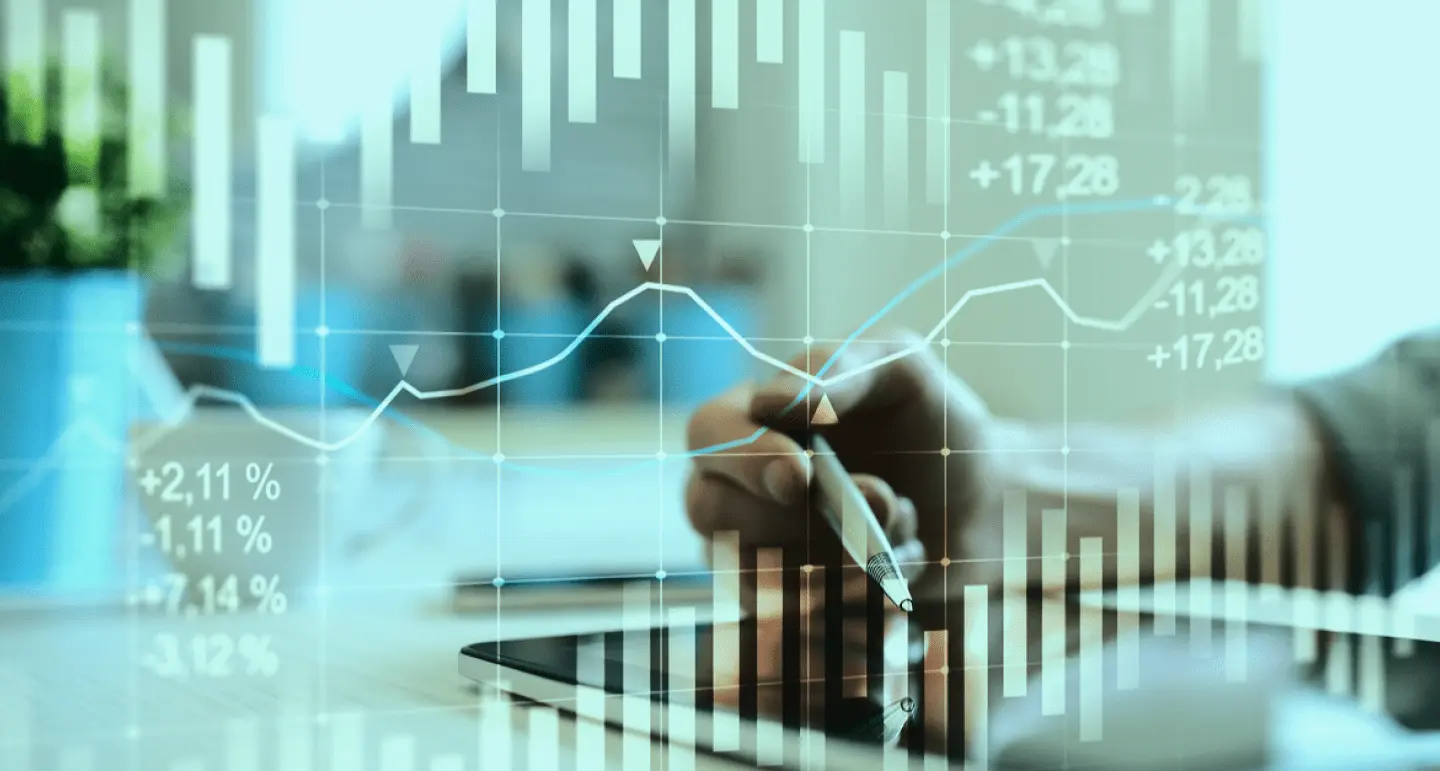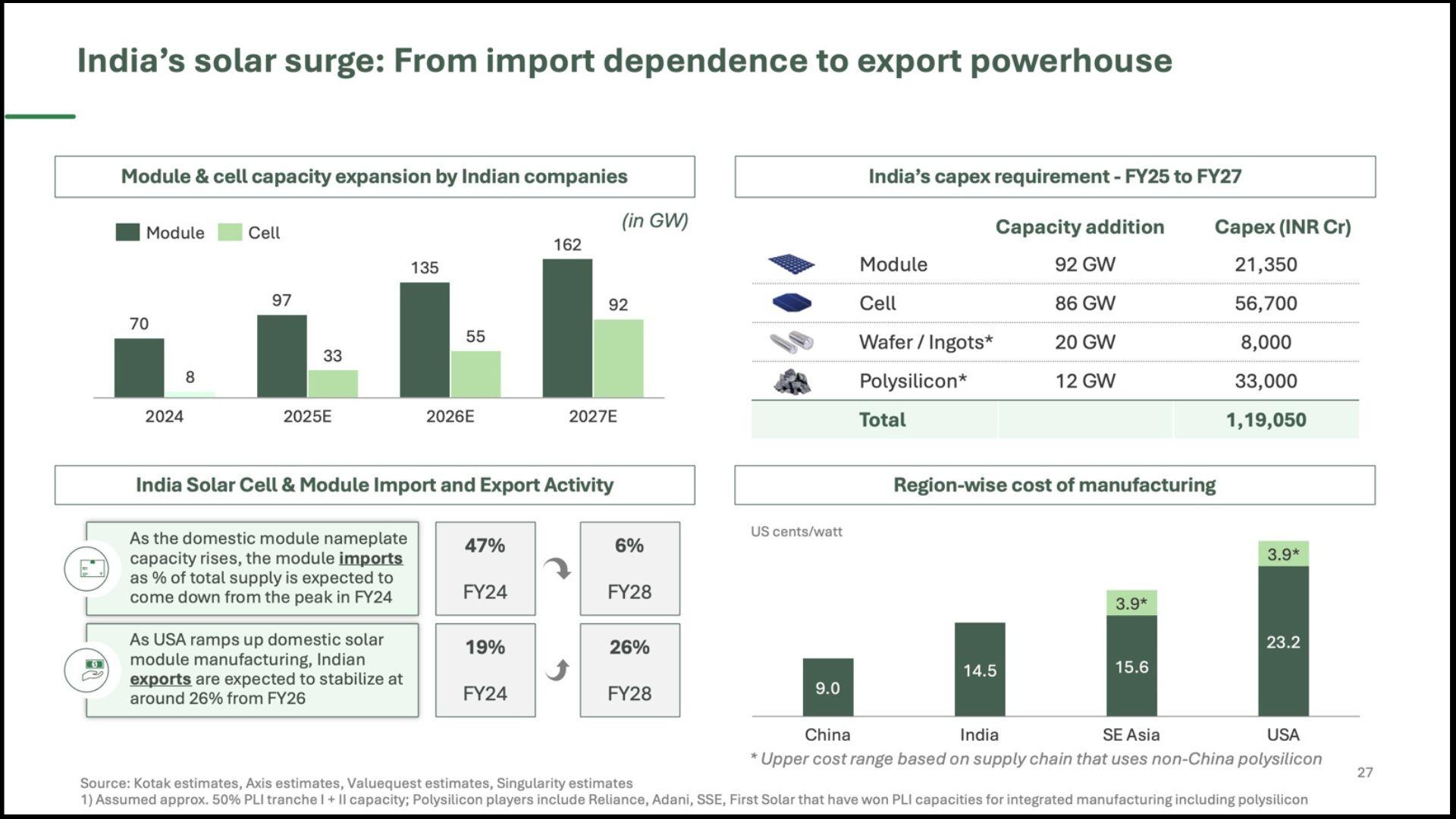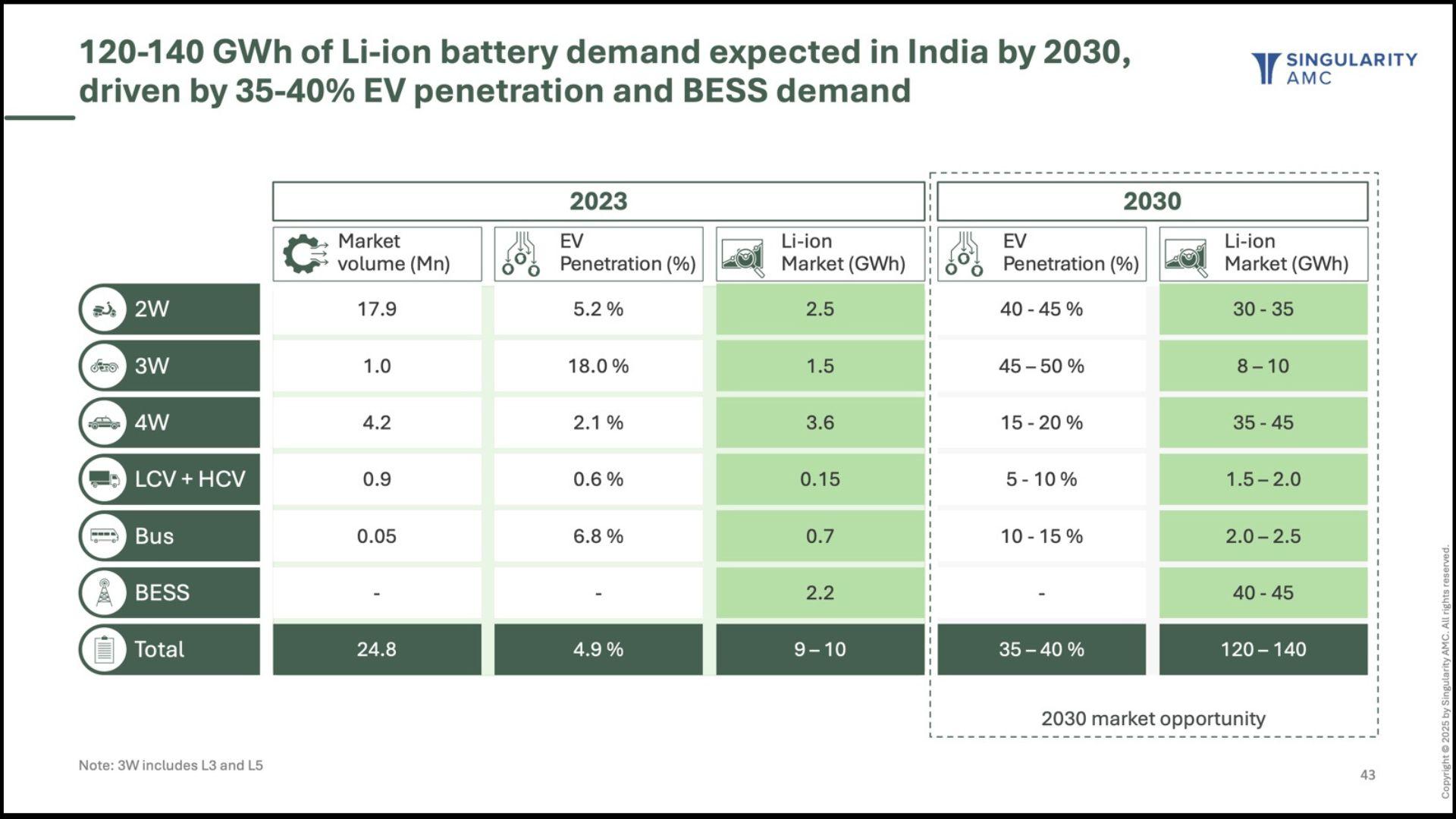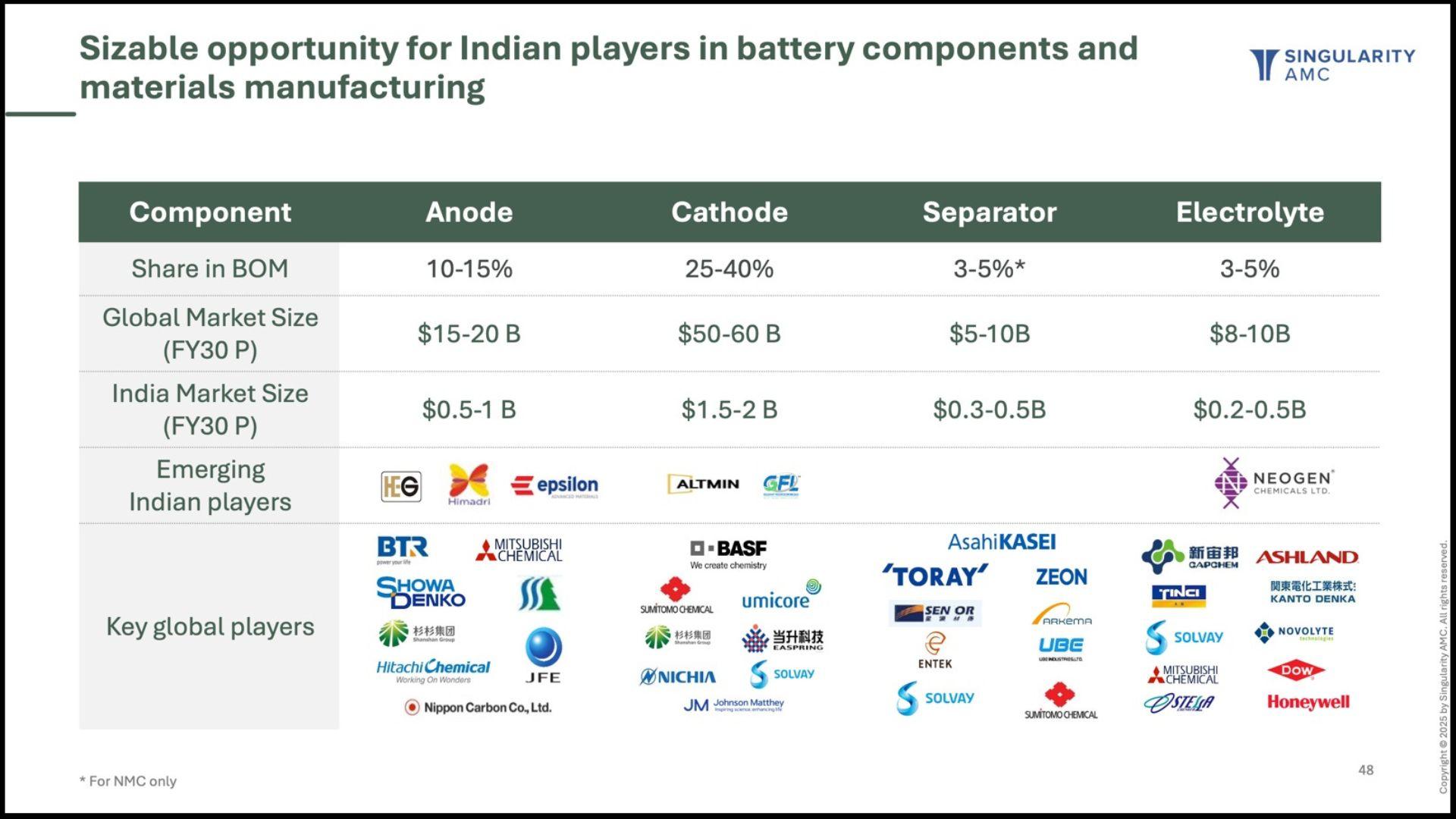
#TheContext
Powering India's Clean Energy Future: From Solar to Battery Leadership
Suyash Kela
Pratik Agarwal
Follow the Authors
The shift away from fossil fuels is no longer a matter of "if" but "how fast". Energy transition is now a global economic race, withover $2 trillion being deployed annually across renewables, storage, electrification and more. India, one of the largest and fastest-growing energy markets, has a clear choice: remain dependent on global supply chains, or lead the clean energy ecosystem from the front.
At Singularity AMC, our conviction is clear. Building India’s energy autonomy is not just about reducing emissions or lowering the import bill. It is about creating long-term national competitiveness in technologies that will define the next several decades.
India’s Solar Push: A Clear Win So Far
One area where India has already shown leadership has been renewables, especially solar. Over the past five years, the sector has scaled meaningfully both in terms of capacity addition and upstream manufacturing. Our portfolio company Waaree Energies' revenue has grown 100x+ in 13 years, from 110Cr in FY11 to 11400 in FY24, driven by both export opportunities and domestic demand. With supportive policies like ALMM and PM Surya Ghar schemes, India is now actively building out the entire solar manufacturing stack, backward integrating from modules assembly to cells to wafers / polysilicon.

This upstream momentum is matched by downstream adoption. India’s total installed solar capacity is now among the top five globally. Solar is expected to remain the backbone of ourrenewable energy target of 500 GW by 2030.
Transmission: The Quiet Backbone of Renewable Transition
While solar grabs headlines, it is India’s expanding transmission and distribution infrastructure that enables clean energy to reach where it's needed. Companies like Power Grid Corp have been expanding grid capacity and government plans aRs 9.12 lakh crore investment by 2032 under the National Electricity Plan.

The importance of Transmission & Distribution will only grow as more renewable power is added. Managing intermittency, integrating battery storage and building flexible, smart grids will be critical. Without this backbone, generation potential cannot be fully realized.
Batteries: The Next Strategic Priority
As India continues to do well in solar and T&D, batteries are where the next big leap must happen. Batteries today power not only EVs but also enable grid stability, autonomous tech, and large-scale energy storage. These are all essential for a clean energy future.

Globally, battery manufacturing and supply chains are becoming the new oil. But in India, nearly everything from raw minerals to finished battery cells is still largely imported. Most of India’s lithium-ion battery imports came from China, which controls 85% of world’s refining capacity of rare earth. Most domestic players remain focused on low-value stages like final assembly.
What Needs to Be Built
There is a lot of discussion around gigafactories. But batteries are more than just cell assembly. The real value lies in upstream components such as cathodes, anodes and electrolyte chemistries. All of these depend on critical minerals like lithium, cobalt, nickel and graphite.
This is where strategic autonomy comes in. Even if we lack large reserves of certain minerals, India must build refining and processing capabilities. China gained its edge not by owning minerals, but by dominating refining and midstream manufacturing.

India can start with areas where we already have a cost edge. Graphite is one such opportunity. Our portfolio company HEG Ltd produces anode materials such as graphite, and Lohum specializes in battery recycling and cathode materials like lithium, both representing promising investment avenues for domestic and international capital.
Why This Matters Today and The Path Ahead
The world is entering an era of energy-intensive autonomy. Driverless cars, AI-powered robots and smart devices that work offline are all on the rise. Each of these demands batteries that are efficient and locally available. Current global forecasts may be underestimating how much battery capacity and mineral supply will be needed when autonomy meets mobility and AI.
India must not remain just a consumer of this future. We need to build the capacity to shape and supply it. Battery components, especially midstream processing and refining, must be treated as national priorities.The Union Cabinet’s approval of the ₹34,000 crore National Critical Minerals Mission is a strong step in that direction.
Private capital has a central role. At Singularity AMC, we are backing founders building real capability across the battery value chain - from mineral recovery to component manufacturing to recycling and more. Our focus is not on chasing trends, but on building foundational infrastructure.
India’s energy independence story will be defined not just by gigawatts, but by gigafactories and grams of refined materials.
For a deeper dive, please refer toour LinkedIn page, where we share our investment thesis on energy transition and batteries.
#TheContext by IVCA – features opinion makers from the alternate investing industry with strong focus on India as an investment destination. Watch this space for new announcements in the sector, viewpoints on investment themes, emerging trends, economic reports and latest industry insights. Content in this section is curated by team IVCA. To share feedback, connect with paromita.sinha@ivca.in